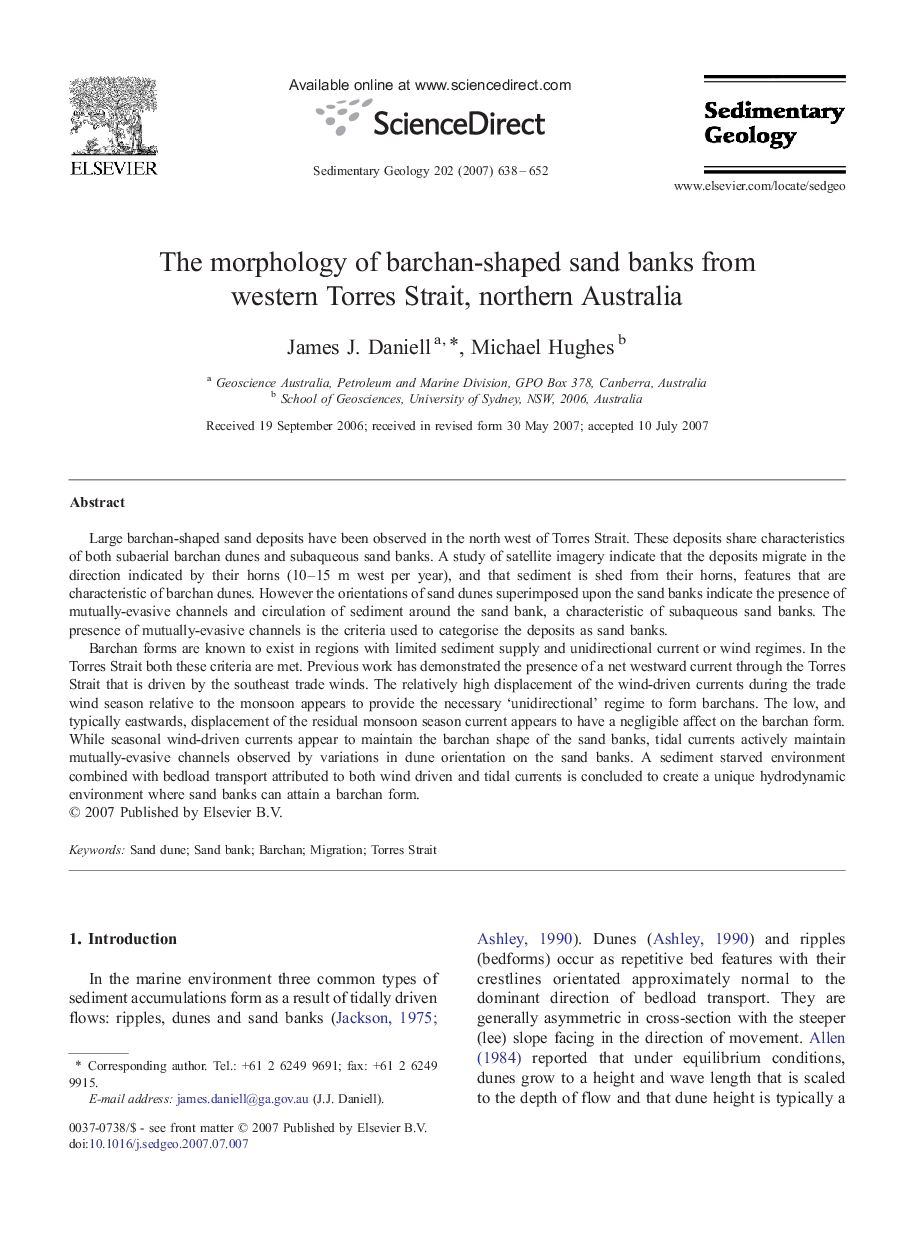| کد مقاله | کد نشریه | سال انتشار | مقاله انگلیسی | نسخه تمام متن |
|---|---|---|---|---|
| 4690697 | 1350137 | 2007 | 15 صفحه PDF | دانلود رایگان |

Large barchan-shaped sand deposits have been observed in the north west of Torres Strait. These deposits share characteristics of both subaerial barchan dunes and subaqueous sand banks. A study of satellite imagery indicate that the deposits migrate in the direction indicated by their horns (10–15 m west per year), and that sediment is shed from their horns, features that are characteristic of barchan dunes. However the orientations of sand dunes superimposed upon the sand banks indicate the presence of mutually-evasive channels and circulation of sediment around the sand bank, a characteristic of subaqueous sand banks. The presence of mutually-evasive channels is the criteria used to categorise the deposits as sand banks.Barchan forms are known to exist in regions with limited sediment supply and unidirectional current or wind regimes. In the Torres Strait both these criteria are met. Previous work has demonstrated the presence of a net westward current through the Torres Strait that is driven by the southeast trade winds. The relatively high displacement of the wind-driven currents during the trade wind season relative to the monsoon appears to provide the necessary ‘unidirectional’ regime to form barchans. The low, and typically eastwards, displacement of the residual monsoon season current appears to have a negligible affect on the barchan form. While seasonal wind-driven currents appear to maintain the barchan shape of the sand banks, tidal currents actively maintain mutually-evasive channels observed by variations in dune orientation on the sand banks. A sediment starved environment combined with bedload transport attributed to both wind driven and tidal currents is concluded to create a unique hydrodynamic environment where sand banks can attain a barchan form.
Journal: Sedimentary Geology - Volume 202, Issue 4, 15 December 2007, Pages 638–652